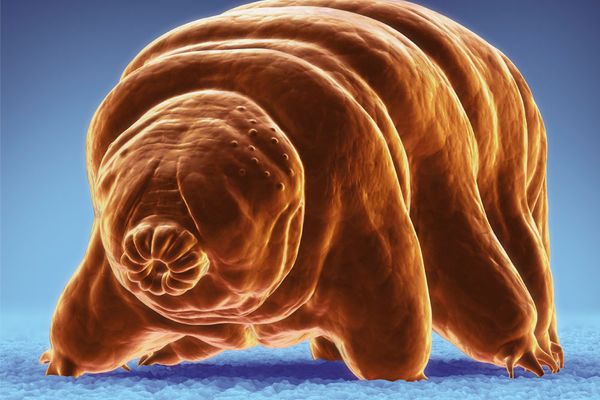Tardigrades, sometimes called water bears or moss piglets, are microscopic, water-dwelling organisms known for incredible resilience in extreme environmental conditions. These tiny creatures typically range from 0.012 to 0.02 inches (0.3 to 0.5 millimeters) in length.
They are one of the few species that can be found on every continent, in a wide range of environments — from deep ocean floors to the highest mountains to extreme conditions like hot springs and Antarctic ice.
Instance, it's unbelievably difficult to kill one of these microscopic creatures. You can dry them out, starve, freeze, burn, irradiate, poison or stick them down in the deepest, most pressurized ocean trench and they will survive. You can even expose them to the vacuum of space (more on that in a bit).
Anatomy of a Water Bear
Tardigrades have a plump, segmented body with eight legs, each tipped with tiny claws or suction pads, giving them their distinctive appearance.
They possess a simple digestive system, including a tubular mouth, pharynx and intestine, but lack a circulatory and respiratory system, relying instead on diffusion for gas exchange. Their nervous system comprises a brain and a ventral nerve cord. Unique cells called Malpighian tubules function in excretion.
Water bears have specialized structures like the buccal apparatus for feeding on plant cells, algae and small invertebrates. Their peculiar adaptability is partly due to cryptobiosis, allowing them to survive extreme conditions by entering a dormant state.
Chillin' in Cryptobiosis
In this state, the water bears retract their limbs, lose almost all body water and form a tun — a desiccated, lifeless form.
Tardigrades can remain dormant for years, even decades, in cryptobiosis. During this period, their metabolic activities drop to nearly undetectable levels. They can endure extreme temperatures, high radiation, vacuum conditions and lack of oxygen.
Researchers found that tardigrades produce unique proteins that protect their cells by forming a glass-like substance when they dry out, which helps them survive harsh conditions. This glassy material melts away upon rehydration, allowing tardigrades to return to their active state.
Even NASA has studied tardigrades, particularly their ability to survive in space. Tardigrades have been sent to the International Space Station to study how they adapt to microgravity.

